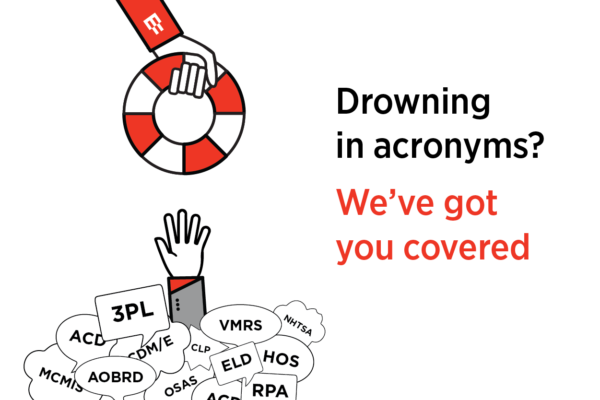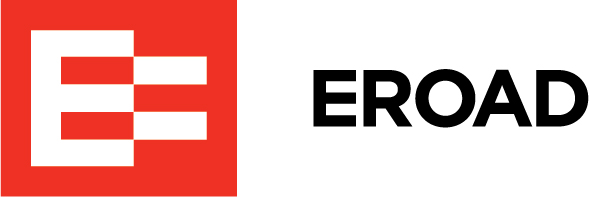The Ultimate Glossary
of Trucking Acronyms, Abbreviations and Associations
Every industry has their own shorthand that makes communicating complex topics faster and easier, and the transportation industry is no different. In fact, trucking and transportation might even be a little more prolific in the generation and daily use of abbreviations and acronyms.
From government agencies, associations and international standards, it’s easy for even seasoned professionals to become bogged down.
We’ve collected a comprehensive list of acronyms, abbreviations and associations to help you better navigate a complex marketplace. Whether you’re new to the industry, driving a rig, or managing a fleet, you’ll learn something new with this comprehensive guide.
This guide covers:
- Common abbreviations used in the industry
- Transportation-related associations
- Other organizations that you might come across in transportation
- Transportation-related agencies, commissions and departments
Get a sneak peak below.
Download the Ultimate Glossary

Preview the Glossary
This short preview gives you a sense of the information included in the Ultimate Guide. Get the entire list by downloading the guide.
3PL: Third-party logistic (3PL) providers outsource elements of a company’s shipping operations, including distribution, warehousing and fulfillment services. Has also been expanded to 4PL and 5PL. For a good overview, including an explanatory diagram, see this article:
https://www.warehouseanywhere.com/resources/3pl-vs-4pl-logistics-definition-and-comparison/
ABC Test: A 2018 California Supreme Court ruling created a test that could become a legal standard for how to classify workers either as employees or independent contractors. To be classified as an independent contractor, the ABC test mandates that an employer prove all of the following: (A) that the worker is free from the control and direction of the hiring entity in connection with the performance of the work, both under the contract for the performance of the work and in fact; (B) that the worker performs work that is outside the usual course of the hiring entity’s business; and (C) that the worker is customarily engaged in an independently established trade, occupation, or business of the same nature as the work performed.
ABS: Anti-lock brake system that assists the driver by rapidly applying and releasing the brakes to each wheel to avoid the wheels locking up during a stop.
ACD: The AAMVA code dictionary (ACD) is a set of codes used nationwide to identify any driver convictions, or reasons that a driver may have lost his license.
ACE: Term used when discussing future truck technology, autonomous, connected and electric (ACE). Coined by Paul Menig at Fleet Owner.
ADA: The Americans with Disabilities Act is a civil rights law that prohibits discrimination based on disability.
ADAS: Advanced driver assistance systems (ADAS) include multiple technologies designed to prevent or reduce the severity of collisions. These technologies include: forward collision warning (FCW), automatic emergency braking(AEB), lane departure warning (LDW), lane keeping assistance (LKA), and blind spot monitoring (BSM) systems.
ADEA: Age Discrimination in Employment Act (ADEA)
AEB: Automatic emergency braking (AEB) systems apply the brakes after sensorts identify objects in the path of the vehicle.
A&I Online: Analysis & Information Online (A&I Online) is a web-based tool that provides access to statistics and analyses regarding commercial vehicle, driver and carrier safety information.
ANPRM: US Government agencies issue Advanced Notice of Proposed Rulemaking (ANPRM) as a step in the process of developing and issuing new regulations.
Check out EROAD’s contribution to the FMCSA’s HOS Flexibility ANPRM here:
https://www.eroad.com/resource/hos-flexibility-eld-analysis-survey-results/
AOBRD: An automated on-board recording device (AOBRD) is an older style of electronic logging device that complies with 49 CFR 395.15. The AOBRD technology must be replaced with ELD technology by December 16, 2019.
API: An application programming interface (API) is a set of tools available to software developers to connect with and extend the functionality of existing software. For example, if an ELD manufacturer has an Open API, this means that they have connections into the ELD software so that other applications can access and potentially manipulate the data collected and stored.
APU: An auxiliary power unit is used to power extra equipment in the cab, for example refrigerator, television or other electronics.
AST: Aboveground storage tanks (AST) are bulk storage containers used to store oil.
AV: Shorthand for autonomous vehicles (AV) that can navigate without human intervention.
BASICs: The behavior analysis and safety improvement categories (BASICs) are seven categories that the FMCSA uses to assess the safety of a carrier. The BASICs are: unsafe driving, crash indicator, hours-of-service (HOS) compliance, vehicle maintenance, controlled substances/alcohol, hazardous materials (HM) compliance, and driver fitness. These are reportable on the FMCSA’s SMS website, some of which are available to the public, while others are private to the carrier and FMCSA only.
BAT: This is shorthand used by the Occupational Safety and Health Administration (OSHA) for best available technology (BAT).
BCO: The beneficial cargo owner (BCO) is an importer who takes possession of cargo at the destination.
B/L or BOL: A bill of lading (BOL) is a document that identifies the freight being carried, where it’s going, and the terms of the agreement between the shipper and carrier.
BSM: Blind spot monitoring (BSM) technologies notify the driver when other vehicles are located in the blind spot and not otherwise visible to the driver.
BYOD: Some ELDs and other technologies run on mobile phone and tablet hardware and these vendors allow you to bring your own device (BYOD).
CAN Bus: A controller area network (CAN) bus is the standard that allows various parts of the truck’s electronic system to communication effectively.
CapEx: Refers to capital expenditure (CapEx) funds used by a company to acquire, upgrade and maintain assets such as power units, trailers or other equipment.
CASRN: A Chemical Abstracts Service registry number (CASRN) is a numerical identifier to identify chemical substances through unique numbers.
https://www.cas.org/support/documentation/chemical-substances
CCSP: A certified cargo security professional (CCSP) is a joint certification of American Trucking Associations and North American Transportation Management Institute.
CDL: A commercial driver’s license (CDL) is the type of license required to drive a commercial motor vehicle (CMV).
https://www.fmcsa.dot.gov/registration/commercial-drivers-license
CDLIS: The commercial driver’s license information system (CDLIS) is a nationwide computer system that enables state driver licensing agencies (SDLAs) to ensure that each commercial driver has only one driver’s license and one complete driver record.
CDM/E: The certified director of maintenance/equipment (CDM/E) is a joint certification of American Trucking Associations and North American Transportation Management Institute.
CDS: Certified director of safety
CDT: Certified driver trainer
CFATS: Chemical facility anti-terrorism standards
https://www.dhs.gov/cisa/chemical-facility-anti-terrorism-standards
CFR: The Code of Federal Regulations (CFR) is a compilation of the regulations issued by the US Federal Government agencies.
CLP: A commercial learners permit (CLP) is a permit that authorizes you to drive on public roads with a driver that has a CDL sitting next to you.
And more …..

